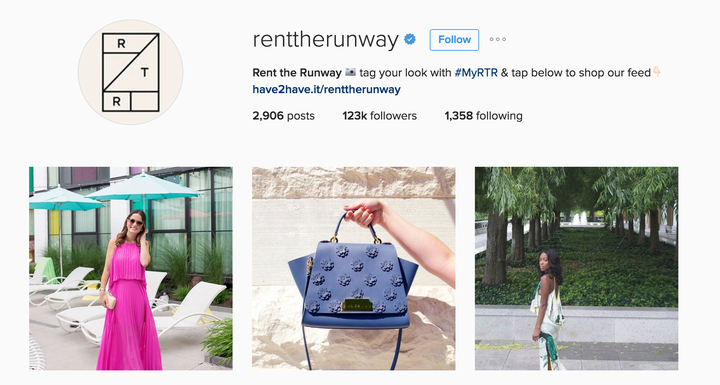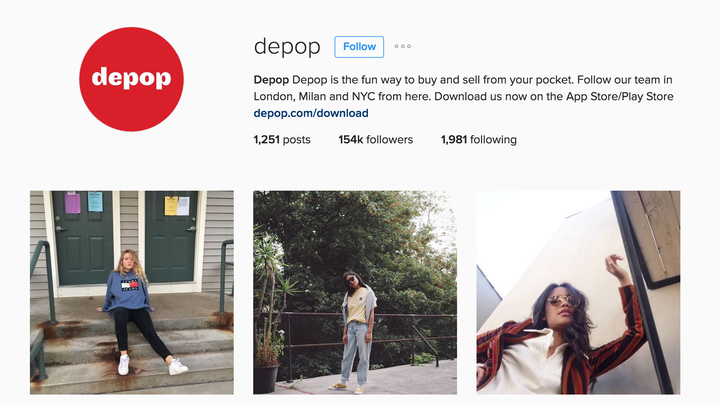As part of HuffPost’s “Reclaim” project, HuffPost Style will focus the month of September on simple ways to educate yourself on becoming a better consumer.
We live in an age where fashion is fast and disposable.
When we don’t want something anymore, it’s easy to just throw it away and buy something new because we likely didn’t spend very much on it to begin with.
But in an economy where more millennials are renting than buying and debt runs rampant, we need better, smarter ways to shop. If we don’t, we’re going to end up with even more heaps of waste and less to show for it.
Brands are aware of the need to repurpose clothing, and some of them are making it increasingly easier for regular consumers, like us, to do so.
We’ve rounded up some of the best companies that are breathing new life into old clothing.
A marketplace where you can pretty much do it all in the way of selling, buying and swapping clothes, Vinted’s website and app resemble a pared-down Pinterest feed.
Users can chat with one another easily, making it more like a social network than a store. With a plethora of hashtags (#VintedSummer, etc.), memes, and nudges to share “DIY, style tips, relationship advice” with one another, the company has the aesthetic of ModCloth, the community of a Facebook group, and the voice of a millennial.
Where Vinted appeals to a younger demographic, the Poshmark app caters to all and is currently the largest community-driven marketplace for fashion. The format for the app also looks Pinterest-y, but the aesthetic is more boutique-y. Countless stories of people making thousands off the app have popped up since the company launched in 2011 and it’s not surprising ― it’s extremely easy to use. Poshmark combines some of the best aspects of social media ― great photos, customizable filters, commenting capabilities, etc. ― to create a network that encourages users to become buyers, sellers and friends.
Poshmark also hosts online events for users, which are great for sellers looking to boost their network.
Rent The Runway is best known for renting out designer dresses for a fraction of the retail price, but you may not have realized how much the brand has expanded beyond that. Just this spring, the company launched its $139 a month unlimited plan, which “allows women to rent and wear up to three pieces at a time from sought-after contemporary design houses including Proenza Schouler, Jason Wu and Derek Lam.” Each item can be kept for a month or sent back a day after wearing, new items can be selected via the app, and shipping and dry cleaning are included.

For a year, an unlimited luxury wardrobe will cost you just about $1,700 ― which amounts to roughly $32 a week. That’s a relatively low price to pay when you think of how many $20 items you buy and inevitably trash within the year. Also, think of this: You’d never have the same outfit in an Instagram photo twice. It’s disposable clothing without any actual disposal.
This San Fran-based luxury consignment site made a name for itself for its reliable ability to authenticate luxury goods and weed out the fakes. The site caters to owners of luxury goods who are looking to sell their items, and also everyday shoppers looking to add to their collection. They sell everything from jewelry to clothes to home stuffs.
Just perusing their inventory will make you rethink how you currently shop for pricier items. When you see how much a secondhand item can go for, it’ll make you more apt to invest down the line. It feels like less of a stretch to drop serious cash for an Hermes bag or one-of-a-kind art when the resale value is nearly equal or more. The purchase is akin to buying a healthy stock.
Tradesy’s formula follows many of those you’ve read about above and focuses solely on clothing, shoes and bags. What makes this platform strong is the structured listings on its marketplace. The listings make it easy for search engines to home in on an item, meaning sellers have a better chance of making bank.
Tradesy’s aesthetic is very editorialized and, like The RealReal, has a rigorous authentication process so there’s less worry (like there might be on a site like eBay or Craigslist).
Since 2009, this resale startup carved out a niche for itself that separated it from its competitors because it does the grunt work for you. Where all the other sites or apps require you to post the photos of your to-be-sold items, ThredUp users can just put their clothes in a pre-marked bag and send it over. ThredUp does the sorting, posting, storing and shipping. ThredUp is most similar to consignment stores like Buffalo Exchange where they’ll go through your items and handpick what can get sold and what can’t. Once your bag of items is processed, ThredUp will tell you what you’ve earned based on their acceptance guidelines and quality standards. Your earnings can be used as credit on the site or you can cash them out after 14 days.
ThredUp also has a regular blog with tips and tricks for repurposing/styling your new and old digs.
Before you scoff at yet another flea market-esque app, we promise that this one is different! Used by celebs like Frances Bean Cobain, Shaq and Dita Von Teese, Depop blew up in the U.K. first and has been getting bigger by the minute.

The site and app feel like Etsy and Instagram had a baby ― it’s an extraordinarily intimate marketplace that holds personality above all else. The more curated and tended to a feed is, the more items are sold.
